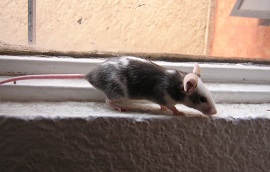It’s an unpleasant situation that many homeowners may have to face one day. Occasionally, a rodent, such as a rat, mouse or other smaller animals, could get into the air ducts, become trapped and die. As the body decomposes, the air circulating through the ducts will carry the odor throughout the entire home. Obviously, this foul odor is less than desirable, but fixing the problem is not very complicated if you follow these three simple steps.
1. Track Down the Scent:
The smell of a decomposing animal is unmistakable once you’ve experienced it firsthand. The odor is the first clue most homeowners have that a rodent has gained access to the ductwork. The odor will circulate through the house, and it can be very strong. In fact, many people wrongly look at other parts of their homes first, suspecting that the dead animal is in another location, such as the basement, attic or a crawlspace. As unpleasant as the task may be, it’s essential to pinpoint where the odor is coming from. Trust your sense of smell and follow it to where the odor seems to be worst. This may be near an HVAC vent; remove the cover and look inside with a flashlight. If you can see the animal, you can move on to the next step, which is removal. If you’ve searched high and low, and you still cannot locate the source of the odor, it’s time to call out a professional HVAC technician.
2. Removal and Cleaning:
Once the animal corpse is located, it’s time to carefully remove it. You will need some equipment including rubber gloves, a garbage bag, paper towels and a disinfectant spray. If the animal cannot be reached, you may need to extend your reach with something long, like a wire coat hanger. Put the gloves on and carefully place the animal in the garbage bag and get it out of the home. Check with your local waste authority, to verify if there are any specific policies covering the disposal of dead animals. Return to the ducts and thoroughly clean all the affected areas using the towels and disinfectant spray. If the animal was out of reach, you might have to use a small mop and throw the mop head away afterward. The smell should in your home should disappear quickly and return to normal.
3. Locating and Plugging the Leak:
This is an optional follow up step to prevent another animal from getting into the ducts in your home. An inspection of your ductwork and HVAC system may reveal how the animal got there in the first place. As an added bonus, you may also find some smaller leaks that could be affecting the energy efficiency of your system. The best way to plug the leaks and get your system working as intended is to schedule an inspection. Then get a professional to fix any problems and have the ductwork professionally cleaned. This will remove any bacteria, viruses, and odors, that may still be lingering in the ducts.
